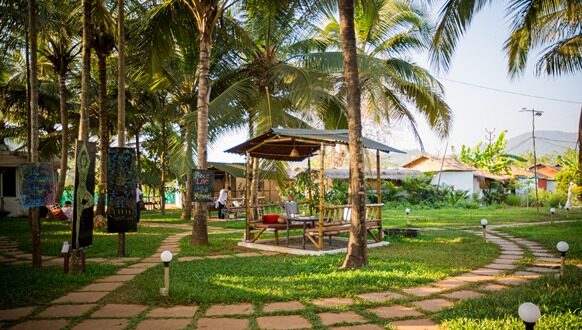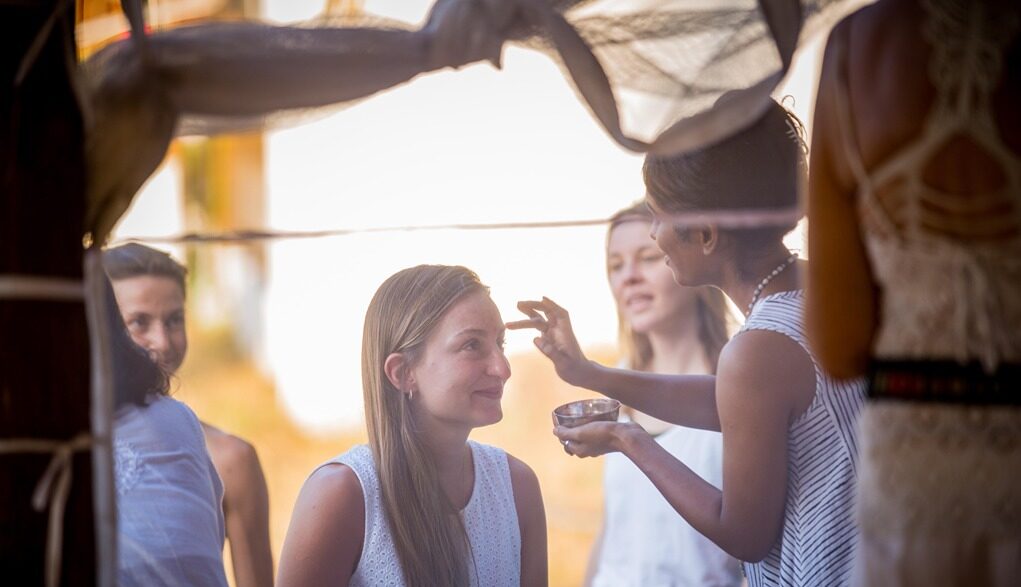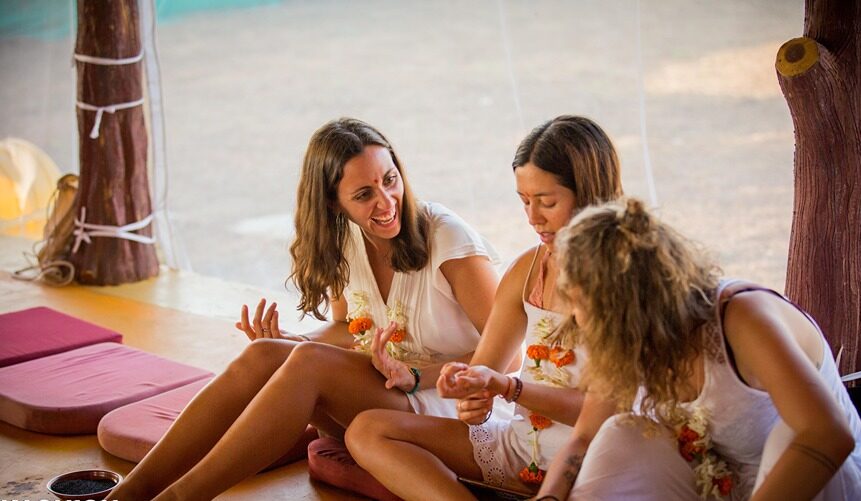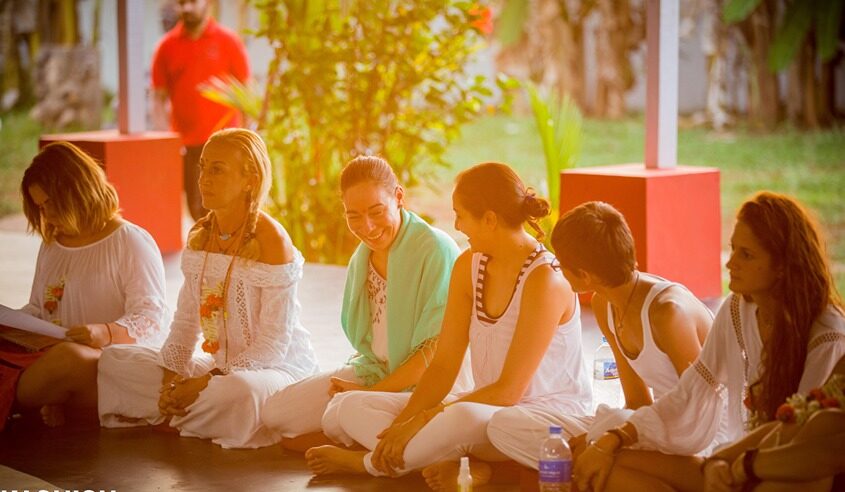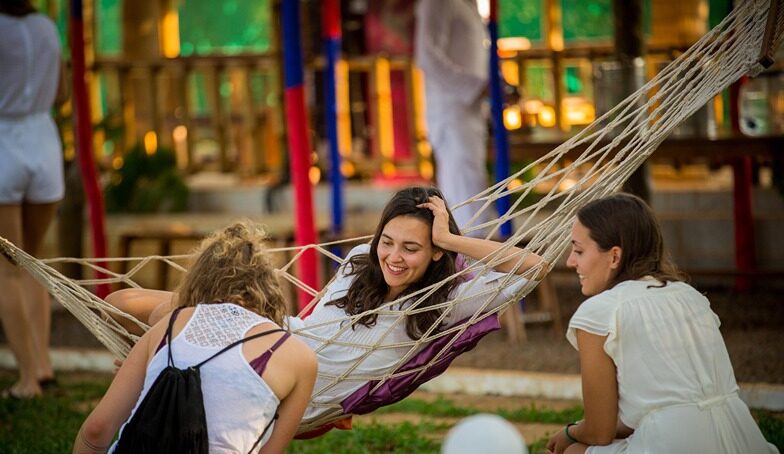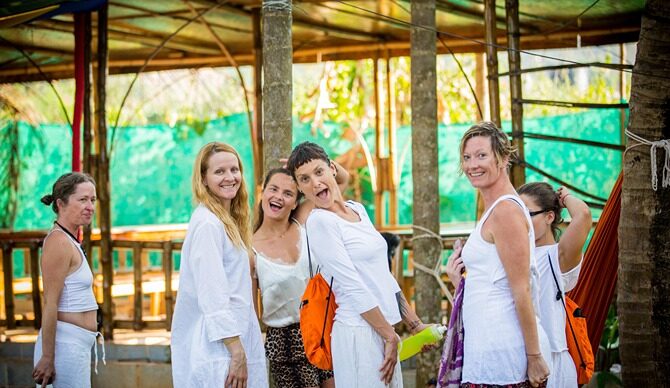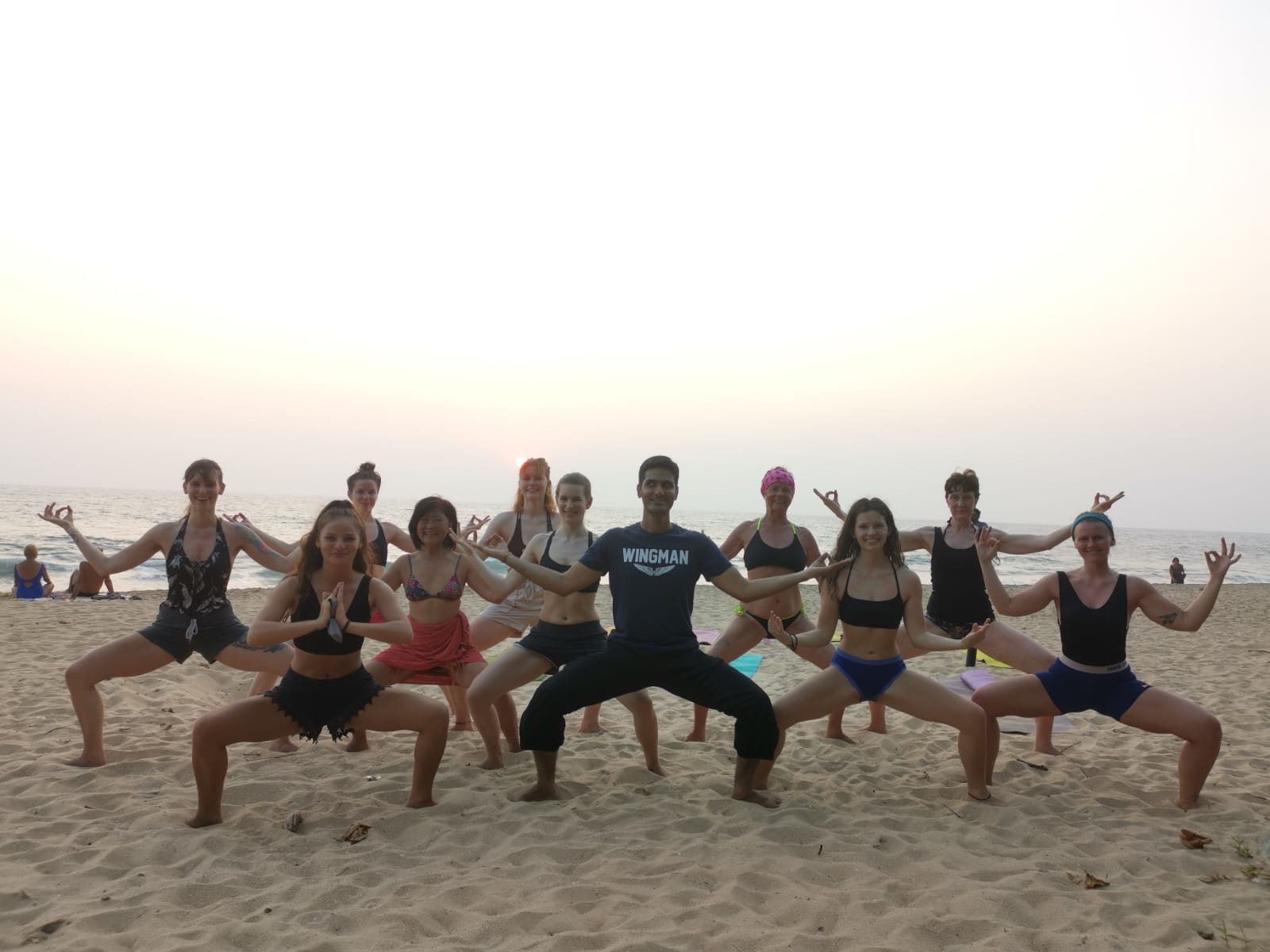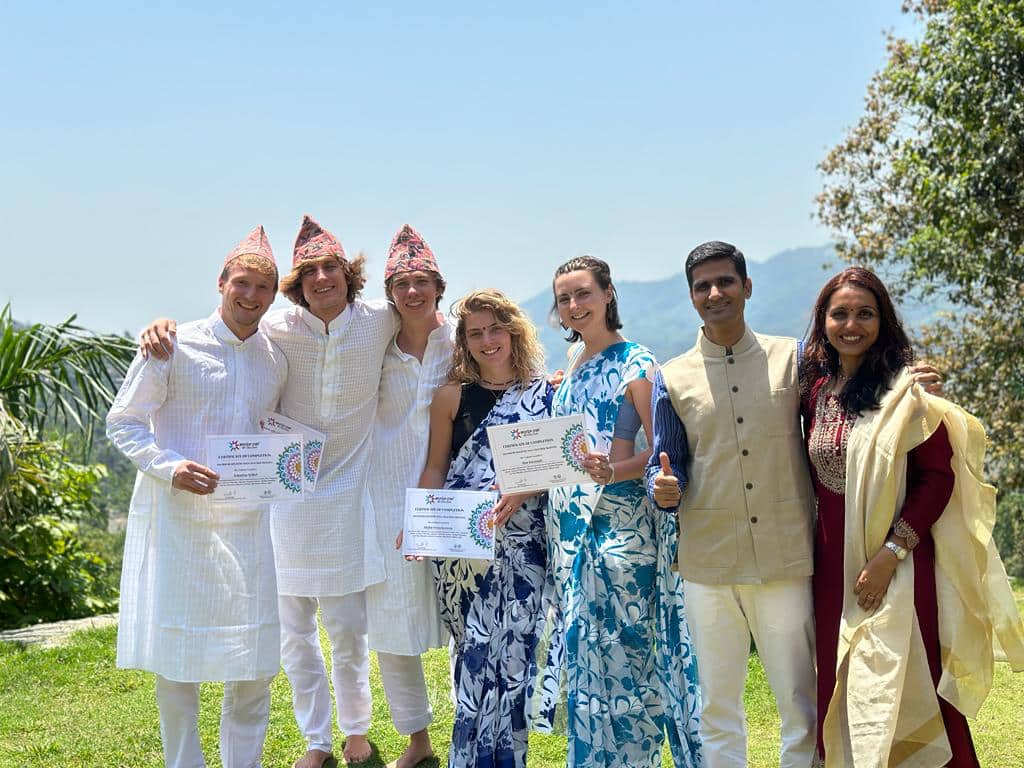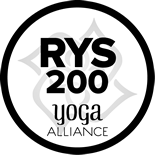
Get USD 100 Early Bird Discount
200 Hour Yoga Teacher Training - Palolem, GOA
Discover Holistic Yoga from Authentic Yoga Teachers
November 16 - December 13, 2023
Enquire Now

28 days of Intensive Program
Self-reflect and introspect in the picturesque location of Palolem, Goa.
High Quality, Safe, Accessible & Equitable Yoga Teaching

Asanas. Pranayama. Kriyas. Mantras.
Individualised Asana Alignment, Propwork in Yoga Props, Individualised approach to Pranayama, Kriyas, Ashtanga Vinyasa Primary Series and Yin Yoga

Meditation Techniques
Osho Dynamic Meditation, Yoga Nidra, Cyclic Meditation, Om Meditation, Chakra Meditation, Mantra Meditation and much more

Yoga Philosophy
Hatha Yoga, 6 systems of Indian Philosophy, Patanjala Yoga Darshana, Bhagvadgita

Anatomy & Physiology
Yogic Anatomy, Functional Anatomy, Various Systems of the Body, Physiology of Yogic Practices

Sattvic Meals
to complement pactices of the 200 hour yoga teacher training
What PEOPLE SAY
ExcellentBased on 108 reviews
 Varsha Dodeja2024-05-20This is genuinely coming from the bottom of my heart and as honest as possible, so my experience and learning of Yoga before coming in contact with Sayujya Yoga was that - Yoga is much more than just physical poses and stretching exercises. Yoga is a way of life not just on the mat but off the mat as well. I was actively looking for an institution in Mumbai for a TTC that imparts the knowledge of Yoga in its authentic form and resonates with the profound wisdom of Yoga in a manner similar to my own connection and appreciation for the practice. After evaluating and visiting several well known yoga institutes in Mumbai, I discovered Sayujya Yoga’s page through Google. I was thoroughly impressed to find that their approach to teaching aligns closely with my understanding and study of yoga. This includes aspects such as philosophy, Bhakti Yoga, Mantra chanting, Pranayama, Mudras, Anatomy and much more. I enrolled for a 200hrs TTC (11th Batch) with Sayujya Yoga and I think this was one of the best decisions, immense gratitude to Hardik Sir and Prutha Ma'am who patiently taught us all the concept of Yoga from Philosophy, Asana, Anatomy to Functional approach towards asana’s keeping in mind the human body of the modern time Pros : 1.Very in-depth sessions and with a detailed explanation. 2. Prutha Ma'am and Hardik Sir bring a wealth of knowledge and wisdom they have acquired over the past decade. 3. They love sharing their learning and experience so that their students don’t repeat the same mistakes. 4. The location that was selected was centrally located and very convenient to commute 5. Very reasonable in terms of the cost and 6. The entire 200hrs TTC module/Structure was very well planned, everything was systematic and well organized. Cons: 1. I find it difficult to identify any disadvantages associated with this program. The only possible downside is that one may miss the opportunity to participate in it. 😊 May the light of Yoga continue to shine brightly in my life and yours, illuminating the path towards greater peace, happiness, and fulfilment. Hari Aum Varsha from Batch 11 (Mumbai)
Varsha Dodeja2024-05-20This is genuinely coming from the bottom of my heart and as honest as possible, so my experience and learning of Yoga before coming in contact with Sayujya Yoga was that - Yoga is much more than just physical poses and stretching exercises. Yoga is a way of life not just on the mat but off the mat as well. I was actively looking for an institution in Mumbai for a TTC that imparts the knowledge of Yoga in its authentic form and resonates with the profound wisdom of Yoga in a manner similar to my own connection and appreciation for the practice. After evaluating and visiting several well known yoga institutes in Mumbai, I discovered Sayujya Yoga’s page through Google. I was thoroughly impressed to find that their approach to teaching aligns closely with my understanding and study of yoga. This includes aspects such as philosophy, Bhakti Yoga, Mantra chanting, Pranayama, Mudras, Anatomy and much more. I enrolled for a 200hrs TTC (11th Batch) with Sayujya Yoga and I think this was one of the best decisions, immense gratitude to Hardik Sir and Prutha Ma'am who patiently taught us all the concept of Yoga from Philosophy, Asana, Anatomy to Functional approach towards asana’s keeping in mind the human body of the modern time Pros : 1.Very in-depth sessions and with a detailed explanation. 2. Prutha Ma'am and Hardik Sir bring a wealth of knowledge and wisdom they have acquired over the past decade. 3. They love sharing their learning and experience so that their students don’t repeat the same mistakes. 4. The location that was selected was centrally located and very convenient to commute 5. Very reasonable in terms of the cost and 6. The entire 200hrs TTC module/Structure was very well planned, everything was systematic and well organized. Cons: 1. I find it difficult to identify any disadvantages associated with this program. The only possible downside is that one may miss the opportunity to participate in it. 😊 May the light of Yoga continue to shine brightly in my life and yours, illuminating the path towards greater peace, happiness, and fulfilment. Hari Aum Varsha from Batch 11 (Mumbai) Anita Joshi2024-05-19I just completed the 200hrs TTC with Hardik Sir and Prutha Mam at sayujya yoga Mumbai. They both have very depth knowledge of their field, down to earth and very nice people. I think this is my one of the best decision to learn yoga with them Thanks a lot 🙏🙏🙏🙏
Anita Joshi2024-05-19I just completed the 200hrs TTC with Hardik Sir and Prutha Mam at sayujya yoga Mumbai. They both have very depth knowledge of their field, down to earth and very nice people. I think this is my one of the best decision to learn yoga with them Thanks a lot 🙏🙏🙏🙏 meenal n2024-04-13Liked the classes and TTC program. Hardik Sir and Prutha Mam pay attention to the students needs and queries 🙏🙂
meenal n2024-04-13Liked the classes and TTC program. Hardik Sir and Prutha Mam pay attention to the students needs and queries 🙏🙂 Lucy Rutherford2024-04-10I have taken my online yin yoga course with Sayujya. I highly recommend this course , I learnt a huge amount and loved the one hour yin yoga practice. The course is set out well and very clear to follow. Great teachers. Thank you 🙏
Lucy Rutherford2024-04-10I have taken my online yin yoga course with Sayujya. I highly recommend this course , I learnt a huge amount and loved the one hour yin yoga practice. The course is set out well and very clear to follow. Great teachers. Thank you 🙏 The Science Orb2024-04-08Dear Prutha Ma’am and Hardhik Sir, Thanks for sharing your immense knowledge and giving very good yin sessions. Both philosophy and alignment classes were interesting and easily understandable. All the doubts in the classes were cleared with proper explanations. Learnt so many new concepts. Wish to learn more from you both. You both look perfect and compliment each other so well and are very professional. It was pleasure to be part of this Yin Family💝
The Science Orb2024-04-08Dear Prutha Ma’am and Hardhik Sir, Thanks for sharing your immense knowledge and giving very good yin sessions. Both philosophy and alignment classes were interesting and easily understandable. All the doubts in the classes were cleared with proper explanations. Learnt so many new concepts. Wish to learn more from you both. You both look perfect and compliment each other so well and are very professional. It was pleasure to be part of this Yin Family💝 Radha Bisht2024-02-21I had a great learning experience with sayujya yoga . (Course name - Sthirsukham asanam) I learnt how to use props without taking any risk . about different movements of our body . And what is the science behind every movement of our muscles, joints , bones structures etc. Hardik sir is great teacher , great listener . He listen to everyone's problems and try to give the best solutions . With sayujya yoga I got to know the real yoga and how we should treat our body. Thank you 😊
Radha Bisht2024-02-21I had a great learning experience with sayujya yoga . (Course name - Sthirsukham asanam) I learnt how to use props without taking any risk . about different movements of our body . And what is the science behind every movement of our muscles, joints , bones structures etc. Hardik sir is great teacher , great listener . He listen to everyone's problems and try to give the best solutions . With sayujya yoga I got to know the real yoga and how we should treat our body. Thank you 😊 Marko Stott2024-01-28My 200hr Yoga Teacher Training with Prutha and Hardik was a fantastic experience and completely changed my perception of what Yoga is. They are both great teachers but what stands out is how committed they are to doing a thorough job, really going into the detail, whether that is in the yoga philosophy, understanding anatomy or the importance of adjusting each asana position in line with individual body types and skeletal systems. Between them, they cover everything with precision and detail but then also show how it all interlinks - which is a real benefit of having a couple as teachers. I've heard from several other people taking YTTs and none of them have sounded as thorough, or comprehensive as this one. Prutha and Hardik are also great fun, we laughed a lot in lessons and spent some very happy times together. Thank you, Pruthaji and Hardikji, and hope to see you again one day.
Marko Stott2024-01-28My 200hr Yoga Teacher Training with Prutha and Hardik was a fantastic experience and completely changed my perception of what Yoga is. They are both great teachers but what stands out is how committed they are to doing a thorough job, really going into the detail, whether that is in the yoga philosophy, understanding anatomy or the importance of adjusting each asana position in line with individual body types and skeletal systems. Between them, they cover everything with precision and detail but then also show how it all interlinks - which is a real benefit of having a couple as teachers. I've heard from several other people taking YTTs and none of them have sounded as thorough, or comprehensive as this one. Prutha and Hardik are also great fun, we laughed a lot in lessons and spent some very happy times together. Thank you, Pruthaji and Hardikji, and hope to see you again one day. Felicia Marcano2024-01-15Das 200H Yoga Teacher Training, welches Hardik und Prutha in Kooperation mit Kashish Yoga in Palolem ausgerichtet haben war wunderbar und eine super lehrreiche Erfahrung, die ich jeder Person empfehlen würde, die nur ein bisschen an Yoga interessiert ist. Ich hatte Anfangs die Sorge, dass ich vielleicht nicht genügend Vorwissen oder eigene Vorbereitung hatte - aber das war gar nicht nötig, denn Hardik und Prutha führen einen strukturiert, aufeinander aufbauend und logisch durch die Yoga-Philosophie und grundlegende Asanas. Wir waren eine kleine Gruppe und hatten dadurch genügend Zeit für all unsere Fragen, die Hardik und Prutha mit viel Geduld, Wissen, stets freundlich und motiviert beantwortet haben. Außerdem haben wir zwischendurch auch tolle Ausflüge gemacht, die mir viel Freude bereitet haben. Großes Dankeschön nochmal Prutha und Hardik 🤗🙏🏽🕉️
Felicia Marcano2024-01-15Das 200H Yoga Teacher Training, welches Hardik und Prutha in Kooperation mit Kashish Yoga in Palolem ausgerichtet haben war wunderbar und eine super lehrreiche Erfahrung, die ich jeder Person empfehlen würde, die nur ein bisschen an Yoga interessiert ist. Ich hatte Anfangs die Sorge, dass ich vielleicht nicht genügend Vorwissen oder eigene Vorbereitung hatte - aber das war gar nicht nötig, denn Hardik und Prutha führen einen strukturiert, aufeinander aufbauend und logisch durch die Yoga-Philosophie und grundlegende Asanas. Wir waren eine kleine Gruppe und hatten dadurch genügend Zeit für all unsere Fragen, die Hardik und Prutha mit viel Geduld, Wissen, stets freundlich und motiviert beantwortet haben. Außerdem haben wir zwischendurch auch tolle Ausflüge gemacht, die mir viel Freude bereitet haben. Großes Dankeschön nochmal Prutha und Hardik 🤗🙏🏽🕉️ anne verheecke2023-12-21Truely excellent 200 hour YTT in Goa, thanks to 2 exceptional teachers, Prutha and Hardik.the most important message: yoga is so much more than just asanas. Sure, we spent time on those, but with a functional approach, not an Instagram approach. Every day we did chanting, pranayama, yoga anatomy, fysiology, philosophy, teaching methodology. The nice thing about having just 2 knowledgeable teachers for ALL these subject, is that everything got seamlessly integrated and started making sense. I feel that this YTT has made me a better person, and has given me a push on my yoga journey. Thank you! 🙏
anne verheecke2023-12-21Truely excellent 200 hour YTT in Goa, thanks to 2 exceptional teachers, Prutha and Hardik.the most important message: yoga is so much more than just asanas. Sure, we spent time on those, but with a functional approach, not an Instagram approach. Every day we did chanting, pranayama, yoga anatomy, fysiology, philosophy, teaching methodology. The nice thing about having just 2 knowledgeable teachers for ALL these subject, is that everything got seamlessly integrated and started making sense. I feel that this YTT has made me a better person, and has given me a push on my yoga journey. Thank you! 🙏
Comprehensive 400 Page Manual
200 Hour Yoga Teacher Training
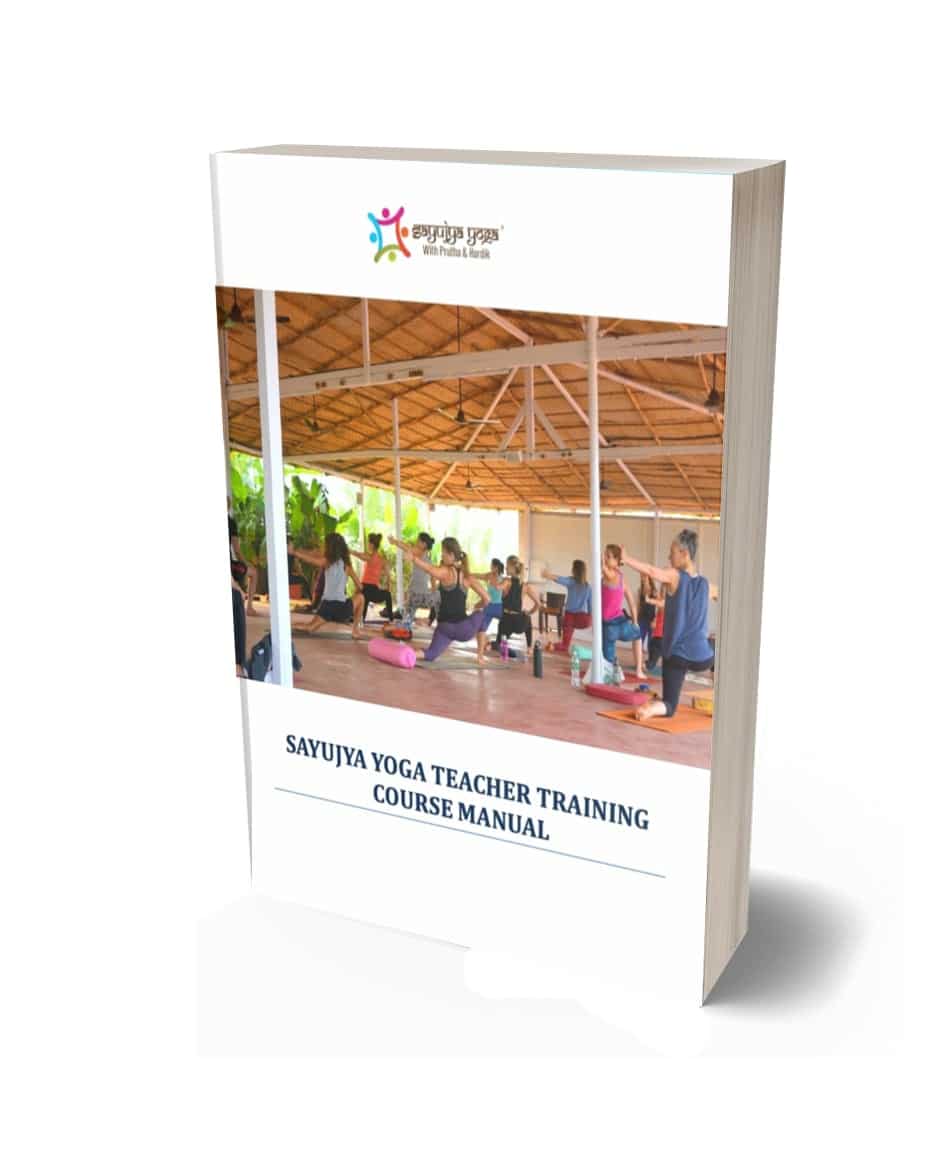
This guide is meant to provide aspiring yoga teachers with a clear and simple introduction to Traditional Yoga and the scientific method as it applies to the art and science of teaching it. The contents also meet the criteria for a 200 hour Yoga Teacher Training programme set forth by the Yoga Alliance. It is my sincere wish that this book will equip you with the knowledge and confidence to lead a yoga class that is beneficial to students of all levels while also igniting a passion for further exploration of the yoga tradition.
Subjects Taught
The practice of Yoga originated over 5000 years ago in India. A multi-dimensional, subtle science aimed at harmonizing the body and mind through wide variety of practices-culminating in spiritual upliftment. Influencing the Psycho- Physiological dimension, the outer rungs of the 8 limbed Yoga of Sage Patanjali include Yama & Niyama (Moral code of Conduct for Yoga Practitioners), Asana (Physical Postures) , Pranayama (Breathwork) and the inner rungs include Pratyahara (Sense Withdrawal), Dharana (Concentration) , Dhyana (Meditation) and Samadhi (Contemplation) to harmonise the Body, Pranas and bring balance to the mind respectively. The subtle and mystical dimensions of one’s being is nurtured and experienced through the journey of these 8 Limbs laid down by Sage Patanjali.
Just as a human is a vital whole that is more than the sum of its limbs and other bodily components, Patanjali’s Ashtanga Yoga is more than the sum of the phases of the eight-limbed path. While all are necessary to the process, their combination produces something vital.
Coping with a society that requires commercialization, an easy and non-threatening strategy of focusing on Asana while ignoring the other limbs is an adversary to traditional yogic wisdom, not to mention a digression from the intended / lofty objective of transcending the mind.
The path of Ashtanga Yoga is shown to us by Sage Patanjali in Patanjala Yoga Darshana that is divided into: 4 Chapters that contains 195 sutras (aphorisms).
Ashtanga Vinyasa Yoga is based on a vigorous physical practise that involves a series of poses linked together with breath to make a continuous routine. The practise requires a lot of physical strength, flexibility, and stamina, which is why many people think of it as a tough practice. Adding an Ashtanga Vinyasa practice to your daily routine is a good way to keep your mind and body healthy and strong, whether you’re just starting out with yoga or looking for something new as your goals change.
Ashtanga Vinyasa style of practicing Asanas is very active and athletic. It is made up of six series or levels, and the poses are always done in the same sequence. It is based on vinyasa, which is a way of moving smoothly from one pose to the next while focusing on energy and breath. Even though it is a very physical practise, it also helps clear the mind and find peace within.
Yin Yoga has the same goals and purposes as any other yoga style; however, it directs the stimulation that is typically produced in the body. Yin Yoga is a fantastic complement to the dynamic and muscular (yang) kinds of yoga that emphasize internal heat and the stretching and contraction of our muscles. It is suitable for practically all levels of students. In general, Yin Yoga focuses on the connective tissues of the hips, pelvis, and lower spine. While this form of yoga may appear to be monotonous, passive, or gentle at first, the lengthy duration of the positions makes it highly hard. We can stay in the poses for one to twenty minutes! Exercise has a varied effect on yin and yang tissues. You must experience this to truly understand what Yin Yoga is all about. After experiencing it even once, you will know that you have only been performing half of the asana practice. In the context of elasticity, our bones and their ligaments can be considered yin-like compared to our more yang-like muscles. So in order to make our ligaments stronger we need to practice yin yoga. Yin Yoga is for joints and Yang Yoga is for muscles. As a yoga practitioner we need to constantly balance our Yin and Yang energies and that is what is called as a balanced practice.
Pranayama is a word that is widely misunderstood. It is commonly translated as “breathing exercise.” Of course, the activity increases the delivery of oxygen to the body and the elimination of carbon dioxide. There is no doubt about it, and this brings about amazing physiological advantages. However, pranayama is more than just a respiratory workout or a breath exercise.
Pranayama does not imply command of the life energy. Pranayama does not imply regulating one’s breathing. So, what exactly is pranayama? Pranayama is the practice of directing the vital energy to each and every corner of the body. It is a procedure that awakes latent prana, the physical body’s resting essential vitality. It is part of a larger system of reintegration, rebalancing, and re-harmonization of body and mind, a system that cleanses and strengthens, removing physical and mental strain and weakness. Pranayama simultaneously awakens the inner consciousness.
Pranayama practice recharges the physical body’s energy, which is subsequently carried through the ida and pingala nadis in the form of electrical impulses to all areas of the body, including the brain. Scientists have discovered that when pranayama is practiced, both hemispheres of the brain are stimulated and there are significant changes in the electrical impulses of the brain.
Meditation is a way of life. ‘darshan’ is another word for life experience. Darshan is a term that most of us are acquainted with. Darshan is a type of ‘inner vision’ that is distinct from a psychic encounter. When a person receives this darshan, he experiences the same level of awareness as when he is awake, and therefore meditation is a way of life.
The raja yoga of Sage Patanjali has maintained the idea that when the mind and its qualities are controlled by the continuous practice of yoga, a higher level of consciousness manifests; and this higher state of awareness is meditation. Because we are involved in yoga practices in some form, we will need to know how to proceed with meditation. We have not accomplished meditation by closing our eyes and disconnecting our minds from sensory input.
Based on our observations and what we have learned from the scriptures, the state of meditation is a dynamic state of awareness that changes not only the subjective, psychic experience, but also the whole character and reactions of the personality. Transformation is a critical process that occurs after meditation. There also seem to be prerequisites to meditation.
Everyone should remember that meditation requires an object to act as a sheet anchor for the consciousness to move around.
There are two kinds of approaches to asanas. One is Functional approach and other is aesthetic approach. Functional approach is all about introspection. Aesthetic Approach is all about cerebral abstraction. Functional approach is all about how and what you feel in the poses whereas aesthetic approach is all about how do I look? Functional approach takes into consideration skeletal variations and based on that selects the archetypal poses which will be most suitable for the student. In Functional approach, asanas are done to harmonize the flow of pranas. Alignment is asanas will be unique for individuals as we all look same from outside but we all have different skeletal structure and proportions of the limbs. Some individuals have long arms compared to the torso, whereas some have shorts arms. Alignment approach towards asanas should not be rigid, it should be adaptive and considerate to human skeletal variations. Functional Approach towards asanas always respects bone to bone compression and allows usage of props to overcome this limitation.
There are two types of restrictions which a student faces while doing any pose. Muscular Tension and Joint Compression. With regular asana practice, muscular tension goes away and then our body reaches the end range of motion which is compression of bones. This the ultimate range of motion and this is edge which will be different for everyone. Thus, as a yoga teacher or practitioner it is very important to understand that everyone is unique and so will be their yoga poses. As Bernie Clark says, we don’t use our body to go into the poses, but we use the pose to go inside the body.
Darshana’ in English is translated as ‘Philosophy’, (Philo + Sophia) (Love for Wisdom). But for Darshana, the word Tattva Gyan should be used. (Tat = That , Tva= Ness & Gyan= Knowledge) .Therefore, Tattva = Real essence & hence we can say that knowing the things in their real essence is Tattva Gyan.It does not mean seeing with the eyes or other senses in the outside world. But it means to see something beyond the senses and mind.
The word ‘Darshana’ comes from ‘Drish’ which ,means ‘to see’ / ‘to know’. ‘Na’ is a suffix which suggest ‘the instrument’.
Therefore ‘Darshan’ is : Perspective to look at the world / Instrument of knowledge.
Indian Yoga Philosophy or Bhartiya Darshana or Bhartiya Tattva Gyana is divided into two schools of thoughts:
Astika (Orthodox) Darshana- Accepts validity of Vedas. They are Nyaya Darshana, Vaisheshika Darshana, Samkhya Darshana, Yoga Darshana, Mimansa Darshana, Vedanta Darshana.
Yoga Philosophy falls under the above category of Astika (Orthodox) Darshana.
Nastika ( Heterodox) Darshana- Negates validity of Vedas. They are Charvaka Darshana, Jain Darshana and Baudha Darshana.
Curriculum & Schedule
As per Elevated RYS 200 Standards
The team at Sayujya Yoga spent six months going over the guidelines word for word and designing the most up-to-date and useful version of 200 hour Yoga teacher training for students. We have introduced a new curriculum with exciting activities and sessions to make your YTTC experience one-of-a-kind and enriching.
History, Origin & Objectives
- Etymology of Yoga
- Origin & Development
- Principles of Yoga
- Aims & Objectives of Yoga
Multifold paths of Yoga
Japa Yoga, Mantra Yoga, Bhakti Yoga, Karma Yoga,
Jnana Yoga, Nada Yoga, Raja Yoga, Hatha Yoga
Six Systems of Indian Philosophy
- Study of Major Yogic Texts
- Patanjala Yoga Darshana
- Hatha Yoga Texts
- Bhagavad Gita
Important Yogic Concepts
- Triguna Theory
- Pancha Kosha
- Pancha Mahabhuta
Yoga Sutras
- Definition of yoga
- 5 Levels of Mind (Chitta Bhumi)
- Objetive of Yoga
- Vrittis ( 5 Fold Modifications of the Mind)
- Chitta Vritti Nirodha (Means to attain Cessation of Modifications of the mind)
- Concept of Ishwar
- Antarayas (Obstacles in the path of Yoga)
- Chitta Prasadana (Concept of purification of Chitta)
- Kriya Yoga
- Kleshas ( 5 Afflictions)
- Ashtanga Yoga
- Yamas & Niyamas ( Observances & Restraints)
- Asana
- Pranayama
- Pratyahara
- Dharana
- Dhyana
- Samadhi
Yogic Anatomy: Pranas, Nadis & Chakras
Mantras – Chanting & Meaning
Anatomy and Physiology
- What is Anatomy
- What is Physiology
- Skeletal System
- Muscular System
- Digestive System
- Respiratory System
- Circulatory System
- Nervous System
- Endocrine System
- Physiological Effects of various Yogic Practices
Functional Anatomy
- Joint Compression & Muscle Tension
- Proportion & Joint Orientation
- Kinetic Chain in Yogasanas
Asanas
- Traditional Surya Namaskar
- Surya Namaskar A & B
- Satyananda Style Suryanamaskar
- Pawanmuktasana Series 1,2,3
- Relaxing Asanas
- Meditative Asanas
- Standing Asanas
- Forward Bending Asanas
- Back Extensions
- Twisting Asanas
- Inverted Asanas
- Arm Loading Asanas
- Asana Flow
- Breathe Body Co-ordination
- Individualised Alignment in Asanas
- Functional approach towards Asanas
- Propwork in Asanas to overcome structural limitations
- Ashtanga Vinyasa Primary Series
- Yin Yoga
Pranayama
- Sectional Breathing
- Yogic Breathing
- Surya Abhyas
- Chandra Abhyas
- Surya Bhedan
- Chandra Bhedan
- Anulom Vilom
- Ujjayi
- Sheetkari
- Shitali
- Bhastrika
- Bhramari
Mudras & Bandhas
- Cultural Mudras
- Hand Mudras
- Facial Mudras
- Tribandha
Kriyas (Cleansing Practice)
- Kapalbhati
- Jal Neti
- Vaman Dhauti
- Trataka
- Laghu Shankhaprakshalana
Meditation & Relaxation practices
- Morning Mantras
- Yoga Nidra
- Kriya Yoga
- Om Dhyana
- Osho Dynamic Meditation
- Cyclic Meditation
- Deha Dharana (Body awareness)
- Prana Dharana (Breath awareness)
Teaching Methodology
- Learning to Instruct
- Content & Levels of Instruction
- Teaching to observe
- Timing a class
- Classroom Oganisation
- Offering props
- Demonstration
- Health Concerns
- Language of Instruction
- Posture Modification
- The Role of a Teacher
- The Art & Science of Yoga Sequencing
6 am to 7.30 am – Asanas
7.30 am to 8.30 am – Pranayama, Dhyana / Yoga Nidra
8.30 am to 9.30 am – Breakfast
11 am to 1 pm – Yoga Philosophy / Anatomy & Physiology
1 pm to 2 pm – Lunch
5 pm to 7 pm – Alignment, Sequencing & Cueing
7 pm to 8 pm – Dinner
8 pm to 9 pm – Bhakti Yoga/ Yoga Nidra /Dhyana
Past TTC Glimpses
Built and surrounded by lush green hills, this is the perfect atmosphere to embark on your journey to becoming a fully qualified yoga teacher. Find inspiration from the nature all around as you practice in the open-sided yoga shalas with views of the green hills and swaying palm trees.Our location is far from distractions and noise, but close enough to the Palolem beach (10 mins by bicycle), so that you can enjoy the beatiful sunsets and sunrises. You can even explore the local beach market and shop to your heart’s content. There are several beach side cafes near Palolem beach for you to relax and enjoy on your Sundays. It is a 5000-square-meter area operating as a Yoga Village, having access to both the beach and the roadside. Sayujya Yoga welcomes you to join its 200 hour yoga teacher training in Goa.
Accommodation & Fees
200 Hour Yoga Teacher Training
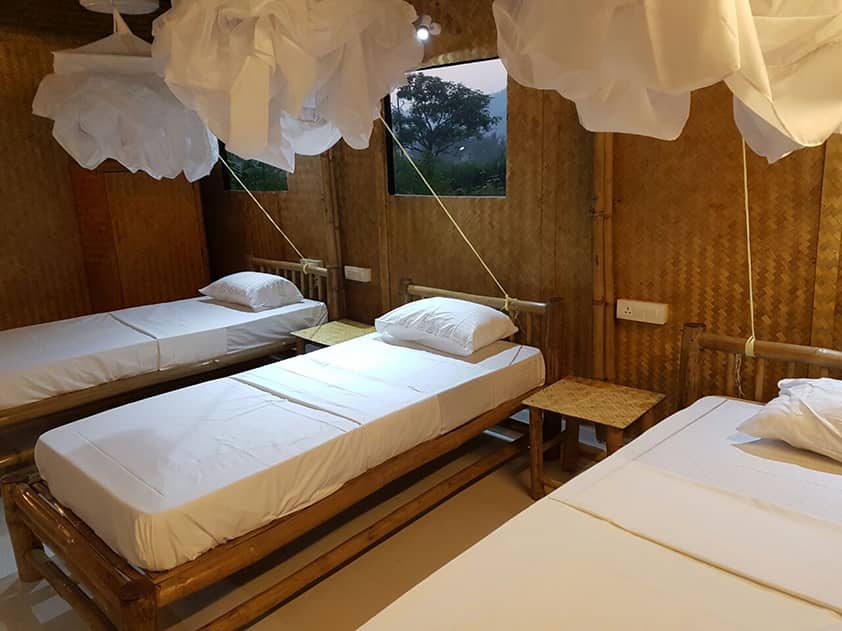
Dormitory Room
USD 1550
Early Bird Price - USD 1450
Registration Fees - USD 300
(non-refundable)
Dormitory room, shared among 6 people.
- 6 Bed Dormitory Room
- 28 Days & 27 Nights
- Course Manual & Study Materials
- 3 Vegetarian Meals /Day
- Tea / Coffee / Filtered Water
- Airport Transfer (Dabolim airport)
- Wifi access
- Access to swimming pool
- Bicycle for geting around
- Beach Yoga
- Excursion
- Complementary - Vegetarian Indian Cooking Classes
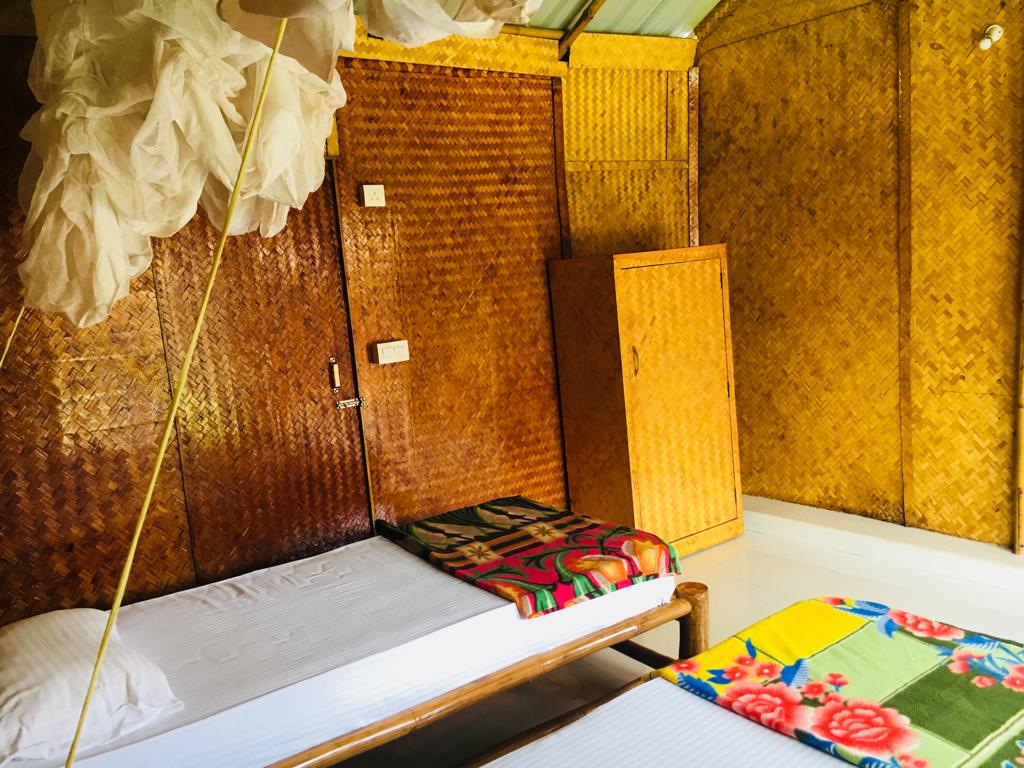
Twin-sharing Room
USD 1750
Early Bird Price - USD 1650
Registration Fees - USD 300
(non-refundable)
Room with 2 beds.
- 2 Beds Double/Twin-sharing room
- 28 Days & 27 Nights
- Course Manual & Study Materials
- 3 Vegetarian Meals /Day
- Tea / Coffee / Filtered Water
- Airport Transfer (Dabolim airport)
- Wifi access
- Access to swimming pool
- Bicycle for geting around
- Beach Yoga
- Excursion
- Complementary - Vegetarian Indian Cooking Classes

Private Cottage
USD 2300
Early Bird Price - USD 2200
Registration Fees - USD 300
(non-refundable)
Private Cottage with Single Bed.
- Single Bed, Private Cottage
- 28 Days & 27 Nights
- Course Manual & Study Materials
- 3 Vegetarian Meals /Day
- Tea / Coffee / Filtered Water
- Airport Transfer (Dabolim airport)
- Wifi access
- Access to swimming pool
- Bicycle for geting around
- Beach Yoga
- Excursion
- Complementary - Vegetarian Indian Cooking Classes
Food & SAMPLE MENU
At Sayujya Yoga, we have chosen the food as per the requirements of the 200 hour yoga teacher training practitioners. Keeping in mind the nutritional values and following the guidelines of ayurvedic science, we have prepared a wide spread of sattvik and rajasik food which satisfies not only the taste of tongue but also the soul and mind.
Sample Menu
Breakfast
- Fruits
- Yogurt / Milk / Soya Milk
- Sprouts
- Porridge
- Oats
- Bread
- Pancakes
Lunch
- Salad
- Rice / Pulao
- Chapati
- Vegetable Curry
- Pulses (Dal)
- Chutney
- Raita
Dinner
- Soup
- Rice / Pulao
- Chapati
- Vegetable Curry
- Pulses (Dal)
- Chutney
- Dessert
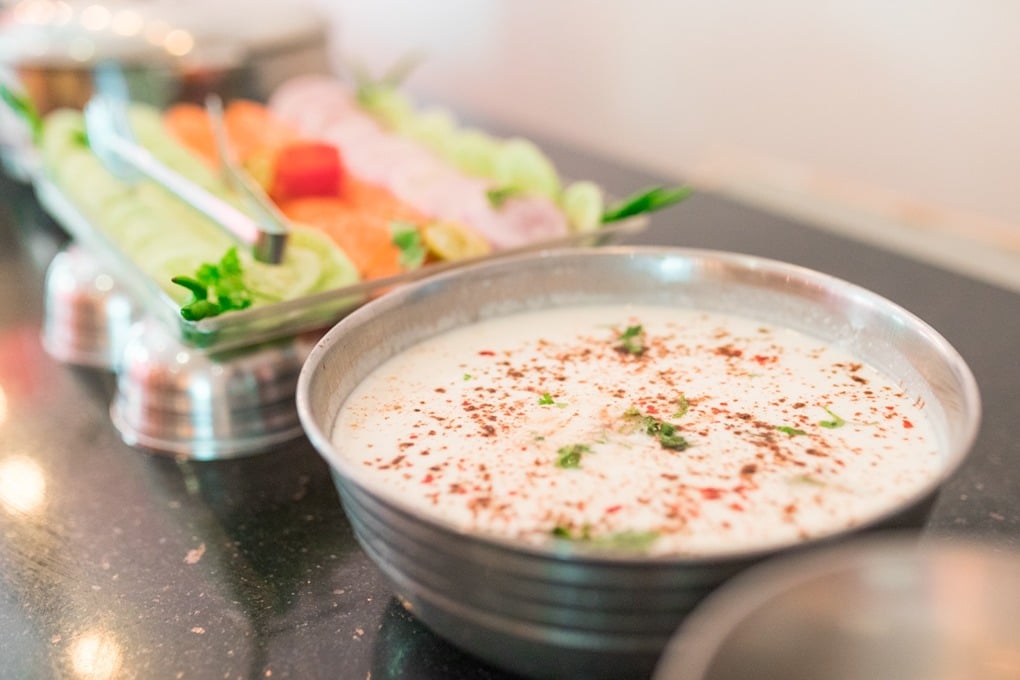
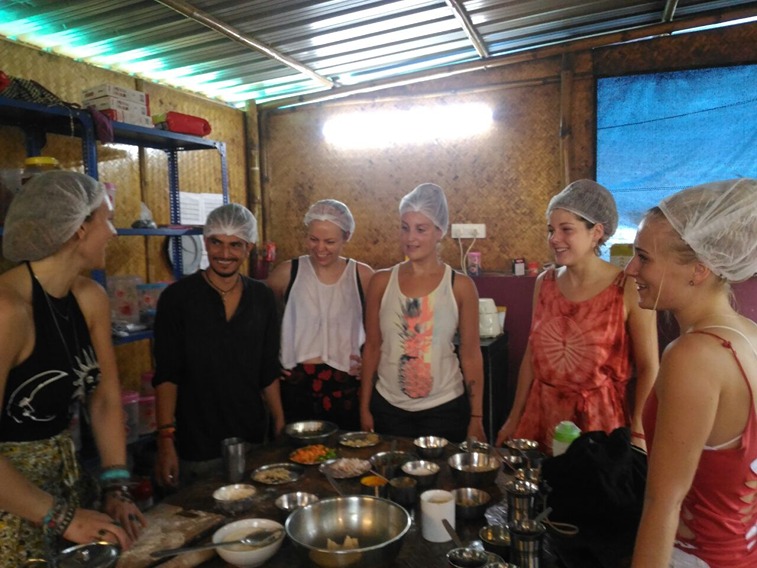
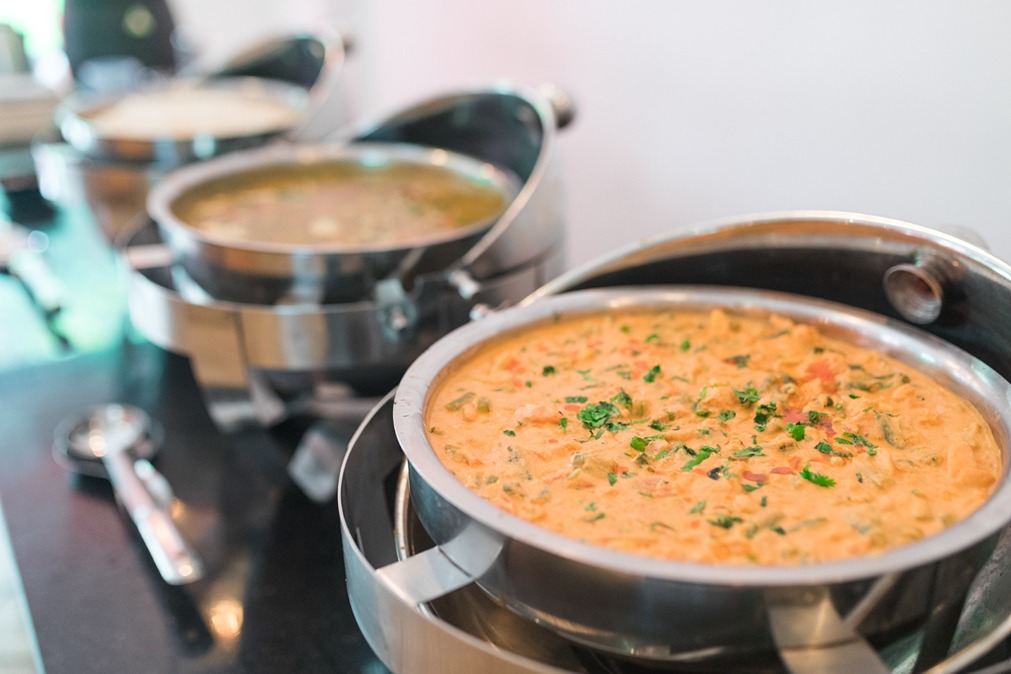
Your Teachers
200 Hour Yoga Teacher Training
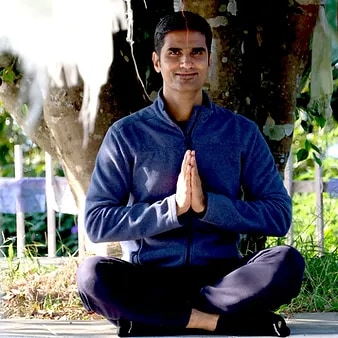
Hardk Mehta
E-RYT 500 & YACEP
Hardik is an E-RYT 500 & YACEP (Yoga Alliance Continuing Education Provider),
Yoga Alliance, USA.
He has been practicing yoga for the last 9 years. Prior to finding his true calling in Yoga, he was working with various corporates for 12 years in the Retail and eCommerce sector.
He specialises in making classes accessible for everyone. He teaches Hatha Yoga, Ashtanga Vinyasa, Functional Approach towards Asanas, Usage of Props based on Structural Limitations, Cueing and Sequencing a Class and Functional Anatomy.
He has completed his Masters in Yogashastra, Teacher’s Training Course from Mysore in Ashtanga Vinyasa, Diploma in Yoga Education, Yoga Posture, Prop, and Alignment Specialist. Apart from Yogic qualification he also possess a degree in Masters of Marketing Management.
Hardik conducts and teaches in Sayujya Yoga Teacher Training and Continuing Education Program for Yoga Teachers in Mumbai, Goa (India) and Pokhara (Nepal)
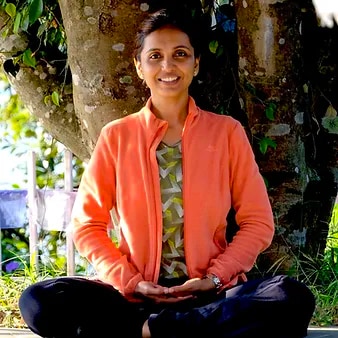
Prutha Bhatt
M.A. in Yogashastra, Pursuing PhD.
Prutha is a visiting faculty at Yoga Department of Somaiya Vidyavihar University, Mumbai. She is currently pursuing her Ph.D.in Yoga from the same University. She is Qualified for the post of Assistant Professor (Yoga) by clearing the NET Exam conducted by University Grants Commission, India.
She has been practicing yoga for the last 9 years. Prior to finding her true calling in Yoga, she was working as a visiting faculty in prominent Fashion Designing institutes in Mumbai.
She specialises in teaching Yoga Philosophy, Pranayama, Mudra, Bandhas, Anatomy & Physiology for Yoga Teachers. She also is an Injury Prevention Specialist in Asanas. She is conducting her Doctoral Research on Asana related Musculo-Skeletal Injuries and is working towards making Yogasanas a safe and accessible practice for everyone.
She has completed her M.A. in Yogashastra, Diploma in Yoga Education, and a Certification course in Patanjala Yoga Darshan, Sankhya Darshan, Bhagwad Geeta conducted by Dr. Rudraksha Sakrikar.
Prutha conducts and teaches in Sayujya Yoga Teacher Training and Continuing Education Program for Yoga Teachers in Mumbai, Goa (India) and Pokhara (Nepal)
Guidelines for Students
- Students should maintain proper discipline and decorum in the school environment.
- No alcohol, meat or smoking allowed on the campus.
- Students should abstain from the intake of intoxicants during the course.
- An attendance of 85% Is mandatory for the successful completion of the yoga alliance certificate.
- Any misbehavior during the course in the campus or in classes will lead to a point of cancellation of your certificate even forceful abandonment from the campus.
- In case of any emergency, if a student needs to leave the course halfway, his/her money will not be reimbursed, however, he/she can attend the same course, at the same location at a different time with the permission of the organizers.
- A non-refundable fee of $300 will be charged to book a seat for one time before the 200 hour yoga teacher training course.
- The school does not provide health insurance any damage covering during the course.
- A student will be responsible for his or her own wellbeing and must communicate his/her special needs and follow teachers’ advice to avoid injuries.
- The time table for 200 hour yoga teacher training will be provided during the orientation and must be adhered to by all and sundry
Facilities
The Center is equipped with
- Yoga Shalas, Yoga Mats, Speaker, LCD Projector
- Eco-friendly bamboo huts and elegant rooms (Dorm/Twin/Single)
- Three chill-out sitting areas
- Swimming Pool to get refreshed
- Open sided dining area
- Reception / Lounge
- Laundry service
- Small library
- Hot water ( available separately)
- Tuk-tuk on call
- 24 hours security at Ashram
- 24*7 Wifi & Bicycles
The Rooms come equipped with:
- Private bathroom with western toilet
- Mini almirah to be shared among roommates
- Comfortable mattress and pillow
- Blanket and mosquito net
- Toilet paper
- Weekly housekeeping

